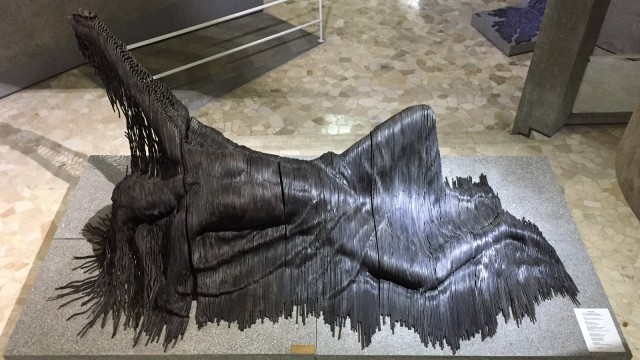Art Consumption by Binus Bandung Design Students 2019 at NuArt Sculpture Park
By Andreas Jaka Pratama
Indonesia is one of many developing countries which inhabitants are living without any particular taste for art. The arts that the Asians known in particular are embedded in our understanding for local crafts and functional designs. But what about the consumption of art in galleries and museum? This begs the question whether anyone who gets into the museum can actually enjoy the art personally. My experience last semester bringing my design students to NuArt sculpture park was initially intended to deliver and introduce them to how an art work is consumed.
Majority of these students claimed that they have never been into museums or galleries before for the intentional purpose of consuming art. Some claimed that visiting galleries and museums are often unintentional or they are often taken for granted as decorative elements; it is no secret that art works often has its charming outer layer where the consumption does not necessarily have to begin inwards outward (from message to quality of visual form). In case of laymen’s consumption of art, even in the age of 18-20s Indonesian youth, it is devastating to find that meditating on something that requires pondering is so draining to them and the joy of pondering is no longer sparking interest. They resorted instead to finding quick answers that satisfies their curiosity instantly.

Devi Zolim, Nyoman Nuarta
It is alarming and easily detectable that with the decline of meditative thinking, consequently the museum tours should be on the rise, however they actually don’t. Visitors are often reluctant to opt for museum tours due to inadequacy of either patience or curiosity for it. As the general mentality in visiting museums here is to find instant answers, a quick moral message that the people can quickly integrate and reposition themselves in becomes necessary. This model is quite the opposite to the commonly held belief of museum creed where the visitor’s freedom and supremacy to interpret the works on their own reign supreme. It is an interesting field of research that piqued my interest.

Nightmare, Nyoman Nuarta
The feedbacks that I’ve managed to secure from the reports was worth commenting on. Firstly, most of the students only recite what they are told, some did, though, reflected the rationality further and bridge conclusions from the collected information into a moral message worth dwelling on. Secondly, when asked if there are ever anything to criticize (in relation to art critics) the students are still sticking to an age old problem of Asian thinking where criticizing someone older is a taboo and they would rather reserve their judgment through comparing themselves with the artist who they saw as someone so much more senior and skilled than they are. Third and final was a confirmation to my decade long questioning of whether museum and galleries exhibition should contain captions attach to each of the art works. In specific case of masses unfamiliar to art the chance for exhibition caption to be existent is highly desirable. In Western audiences’ the constraining factors of exhibition captions are often constricting enough that they held back any freedom of mental exploration in thoughts and ideas as revelation of context renders the interpretation limited to certain things.
So, to summarize, as a note to self I would conclude that the outing program is neither successful nor fail. I can only testify that it is worth mentioning at least the best thing an educator can hope for is to inspire their students to learn new things. It is still too early to knock the hammer of judgment that these students failed in their art appreciation journey. I can only hope that their interest remains into the future so that the available exhibitions and visual arts can be consumed to enrich their future career.


Comments :